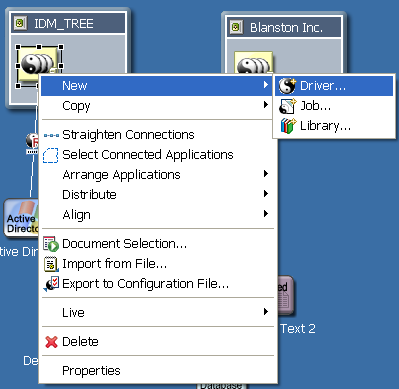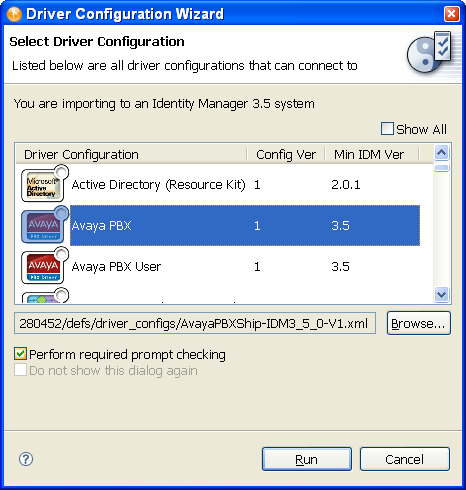|
Driver name |
The actual name you want to use for the driver. |
|
Emulation Mode: |
Select whether this configuration should be initially set up to use emulation mode. Emulation mode provides you with the ability to test live data but not write it out to your phone systems. The default is
.
|
|
Polling Method: |
Select the method the driver should use to poll for changes.
means the driver polls at a given interval specified in minutes.
means the driver polls only at a specified time. You can choose to do both.
|
|
Driver is Local/Remote |
Configure the driver for use with the Remote Loader service by selecting the
option, or select
to configure the driver for local use. If
is selected, you can skip the remaining parameters.
|
|
Site Container: |
Specify the container where site objects will be placed in the directory. For example:
ou=PbxSite.o=MyOrganization.
|
|
Work Orders Container: |
Specify the container where work order objects will be placed in the directory. For example:
ou=WorkOrders.o=MyOrganization.
|
|
Users Container: |
Specify the container that will hold the User objects in the directory. For example:
ou=Users.o=MyOrganization.
|
|
PBX Name: |
Specify the name of the PBX site object. This will be the same name you use for the creation of the PBX site object in the directory. For example:
[ProvoPBX]
|
|
Driver will Manage Avaya Extensions: |
Select whether this driver will be managing Avaya Extensions. The default is
.
|
|
Driver will Manage Audix Subscribers: |
Select whether this driver will be managing Audix subscribers. The default is
.
|
|
Extensions Container: |
Specify the container where extension objects will be placed in the directory. For example:
ou=Extensions.o=MyOrganization.
|
|
Subscriber Container: |
Specify the container where subscriber objects will be placed in the directory. For example:
ou=Subscribers.o=MyOrganization.
|
|
LDAP Host IP Address: |
Specify the LDAP host IP address to be used in emulation mode, for example:
[151.65.137.1].
|
|
LDAP Host Port Number: |
Specify the LDAP host port number to be used in emulation mode, for example:
[389].
|
|
LDAP Host User DN: |
Specify the LDAP host users DN used for authentication to the emulation LDAP system, for example:
[cn=Admin,o=Org].
|
|
LDAP Host Password: |
Specify the LDAP host users password to be used in emulation mode, for example:
[Novell]. Confirm the password.
|
|
Extensions Container: |
Specify the LDAP host container that will be used for the emulation of extensions, for example:
[ou=PbxEmulationExtensions,o=Org].
|
|
Poll Interval (minutes): |
Specify a poll interval, in minutes, for the driver to use. For example, 120. |

